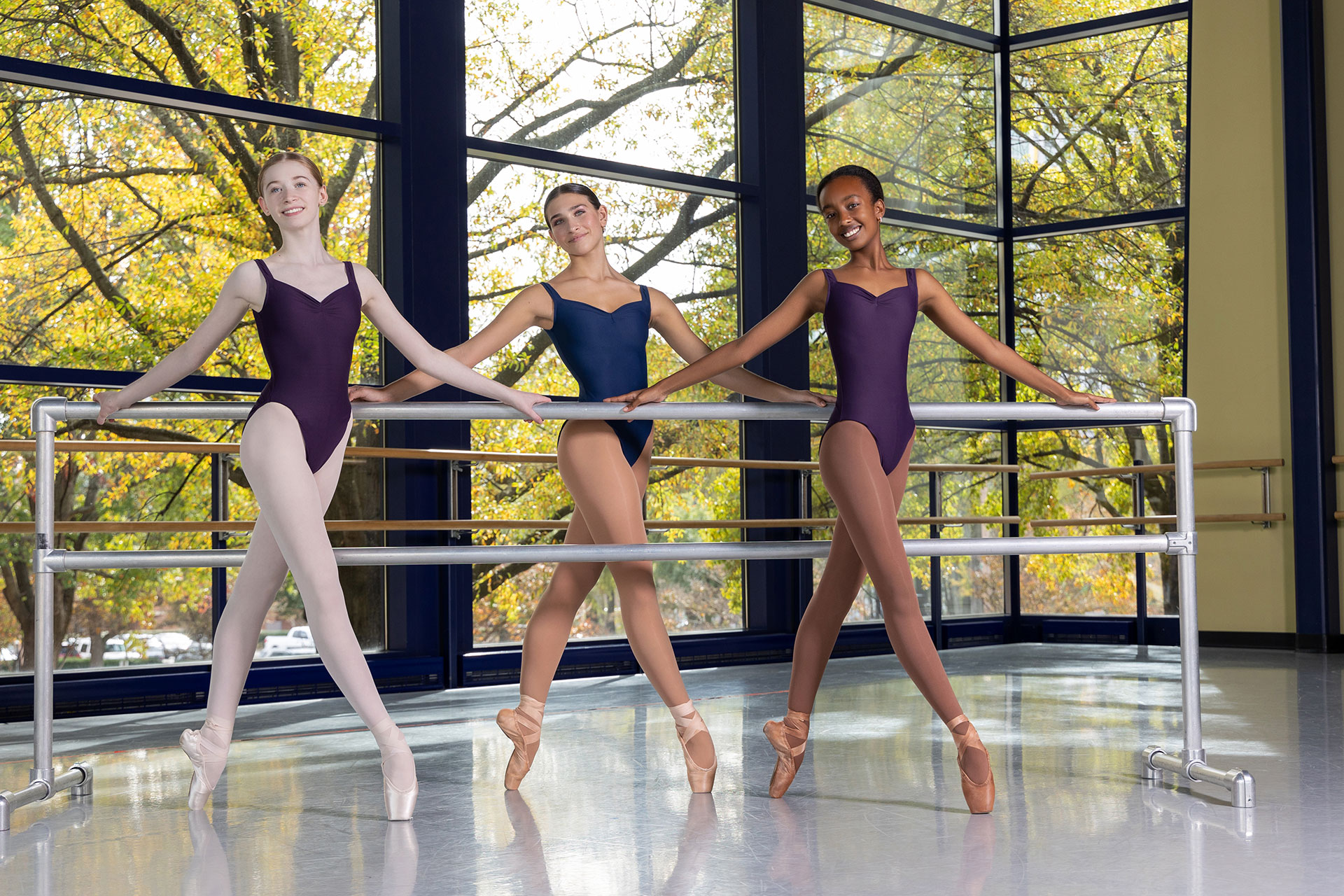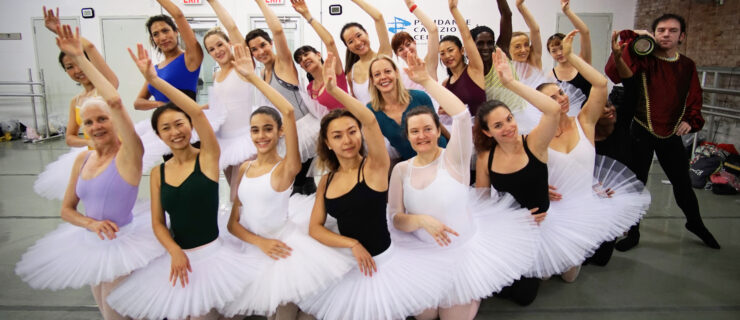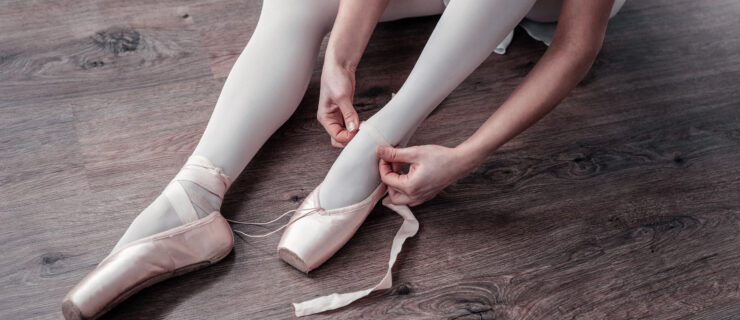Charlotte Ballet’s Summer Intensive Places Focus on Nurturing the Individual Student
Both Karsen Gresham and Gabriel Roush had attended a diverse selection of intensives across the country before attending Charlotte Ballet’s summer program. What made Charlotte Ballet stand out, they noticed, was the individual attention and sense of care that they felt from the faculty and staff. “They make a relationship with every single student that attends the summer intensive and make sure everyone feels like they are seen and noticed,” says Gresham, now a member of Charlotte Ballet II. Roush, who attended the intensive last summer before joining Charlotte Ballet as a Pre-Professional Trainee, agrees. “They care about your feelings outside of dance, and how you’re doing,” he adds.
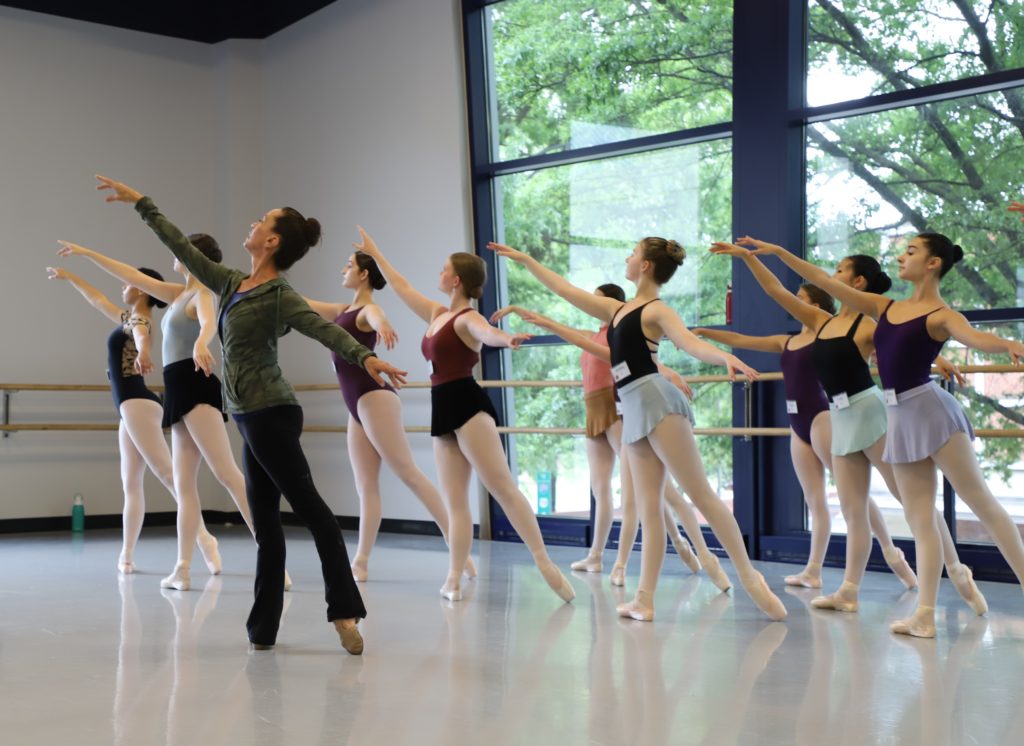
The culture that Gresham and Roush appreciated isn’t born of chance. Rather, it’s an intentional effort by the team behind Charlotte Ballet’s summer programs. “We love to talk about nurturing,” says Ayisha McMillan Cravotta, the director of Charlotte Ballet Academy. “We really feel that is the way that each individual student will excel.” At Charlotte Ballet’s Summer Intensive (designed for dancers ages 11 to 21) and Junior Intensive (for students 9 to 12), this focus goes hand in hand with a well-rounded curriculum and a taste of company life, to push dancers to grow in new and thrilling directions.
Summer Intensive Day-to-Day
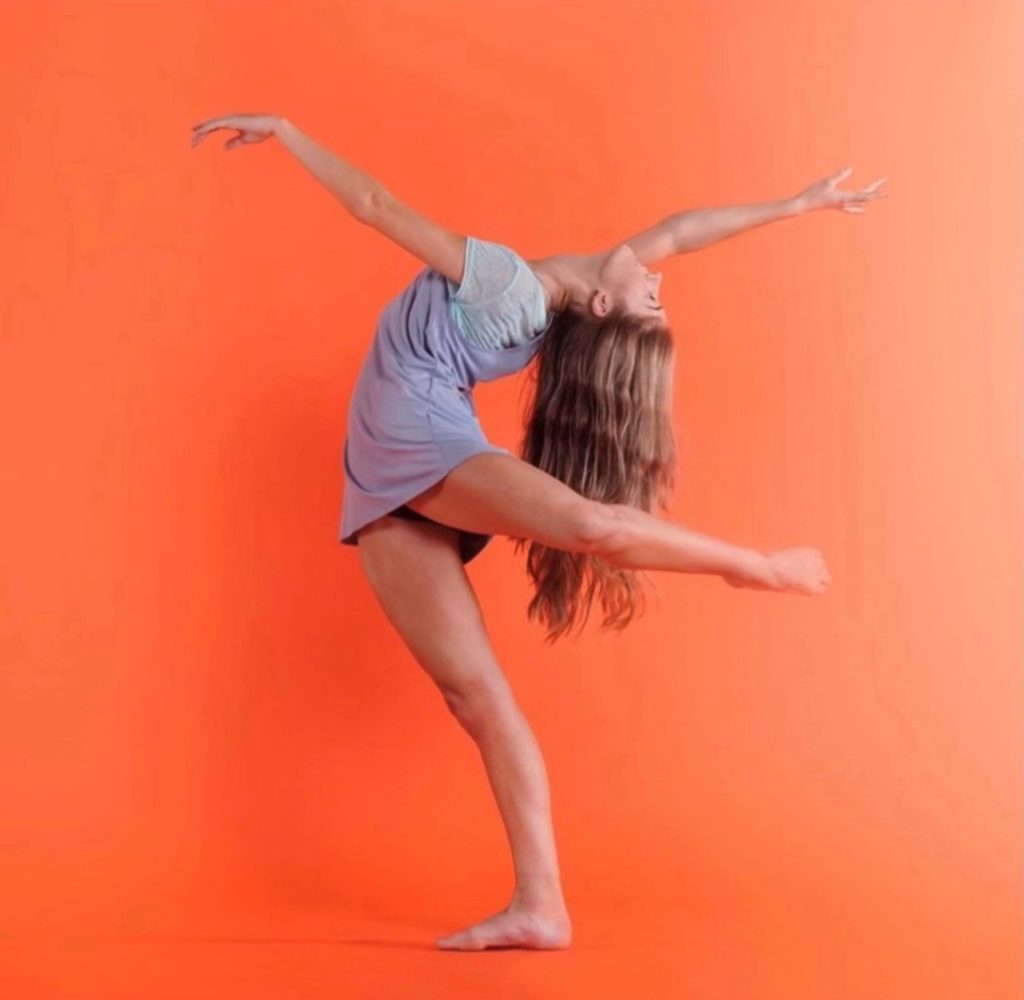
From June 26 to July 29, Charlotte Ballet’s Summer Intensive attendees will train six days a week from roughly 9 am to 4 pm. A typical day starts with ballet technique followed by pointe or variations. After a lunch break, dancers return to the studio to put their technique into action, through classes in classical or contemporary repertoire, modern, musical theater, traditional African dance styles or jazz. Classes are balanced with rehearsals, giving students the chance to try out new forms while also preparing to perform them at the Summer Repertory Performances, which closes out the five-week program. Throughout the summer, additional workshops are offered in physical conditioning and dancer health. “I really like hard classes, and I think having so many hard classes in a long schedule was a really good experience,” says Gresham. Afternoons and days off provided plenty of time for rest, recovery and hanging out with friends, adds Roush.
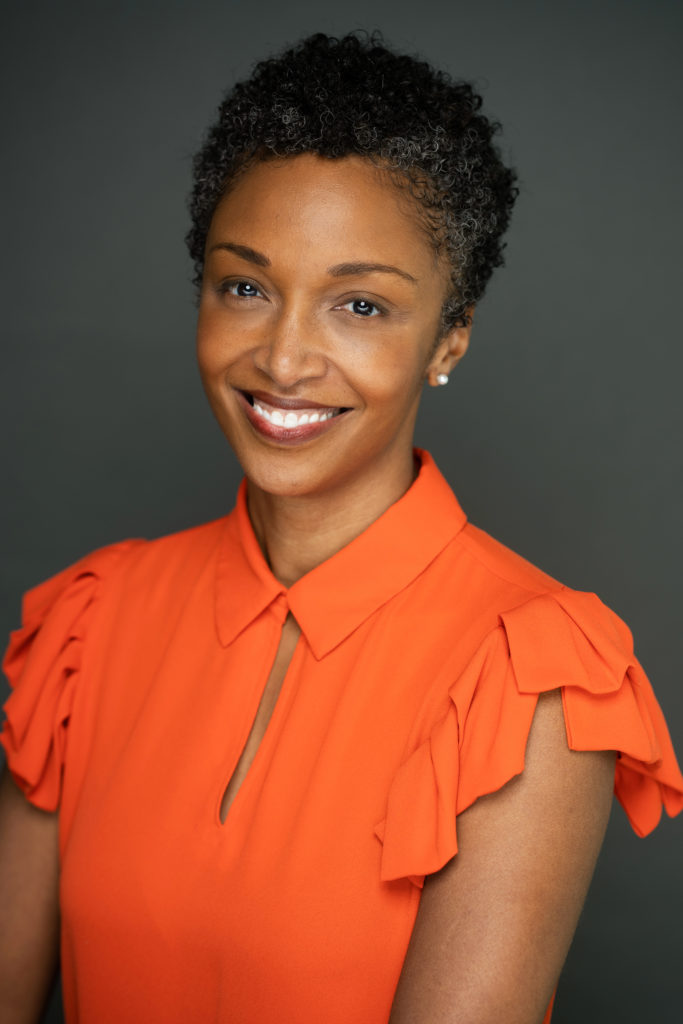
A Well-Rounded Approach
At the end of each summer, Cravotta says, students often approach her with a similar story: “They say, ‘I had never stepped foot inside a West African dance or musical theater class, and it was so much fun!’ ” Reflecting on Charlotte Ballet’s varied curriculum, she recalls feedback from students sharing how “they had never used their voices onstage before, and then they got to perform musical theater—they can’t believe they did all that in five weeks.”
Incorporating classes like traditional African dance, jazz, modern and musical theater into the summer’s schedule not only pushes dancers outside of their comfort zones, but helps to prepare them for company life. “Nothing’s just ballet anymore,” says Roush. “You have to know as much as you can, as many styles as you can; I’m sure they’ll all help me in the future.” In line with giving students a taste of professional life, dancers also have the chance to learn current Charlotte Ballet repertoire from company dancers, as well as create new works with choreographers like Charlotte Ballet artistic director Alejandro Cerrudo and Complexions Contemporary Ballet’s Dwight Rhoden. Each summer features a rotating roster of world-class faculty.
Charlotte Ballet Academy’s philosophy of catering to the whole dancer extends beyond the studio walls. Students who opt for a residential experience are housed in a nearby college dormitory, which includes a daily meal plan and transportation to and from the academy. On days and evenings off, the team behind the intensive makes it their mission to give dancers a chance to unwind and expose them to all that the city of Charlotte has to offer. “We work to create a very nurturing environment in the studio, and that’s consistent with our dorm life,” says Cravotta. Past outings have included baseball games, museums, malls and a local lake to give dancers a chance to cool off. Although Gresham, a Charlotte native, lived at home during her summers at the intensive, she still had the chance to join in on the fun. “It was really nice to make friendships with people coming from different schools,” she adds.
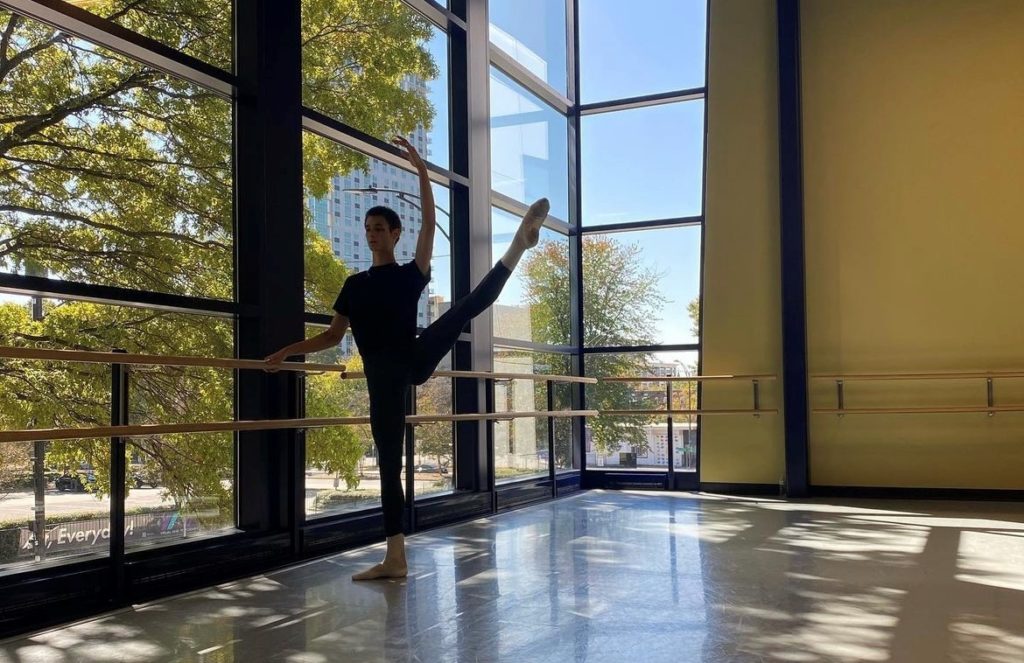
Junior Intensive
While Charlotte Ballet’s Summer Intensive has been around for nearly 25 years, the Junior Intensive is a newer addition to the academy’s offerings. “The focus is on supporting junior dancers where they are,” says Cravotta. “So it’s a rigorous program, but it’s appropriately rigorous.” While the Summer Intensive requires at least a year of pointe training, the Junior Intensive emphasizes preparing younger dancers for pointework. “The goal is to prepare the whole body,” says Cravotta, “if a student has not yet started their pointe training or if they’re quite early in it.” Another highlight is the pantomime storytelling course—a big hit among students. While there’s no residential component to this program, Cravotta says that some families from outside Charlotte choose to rent accommodations nearby.
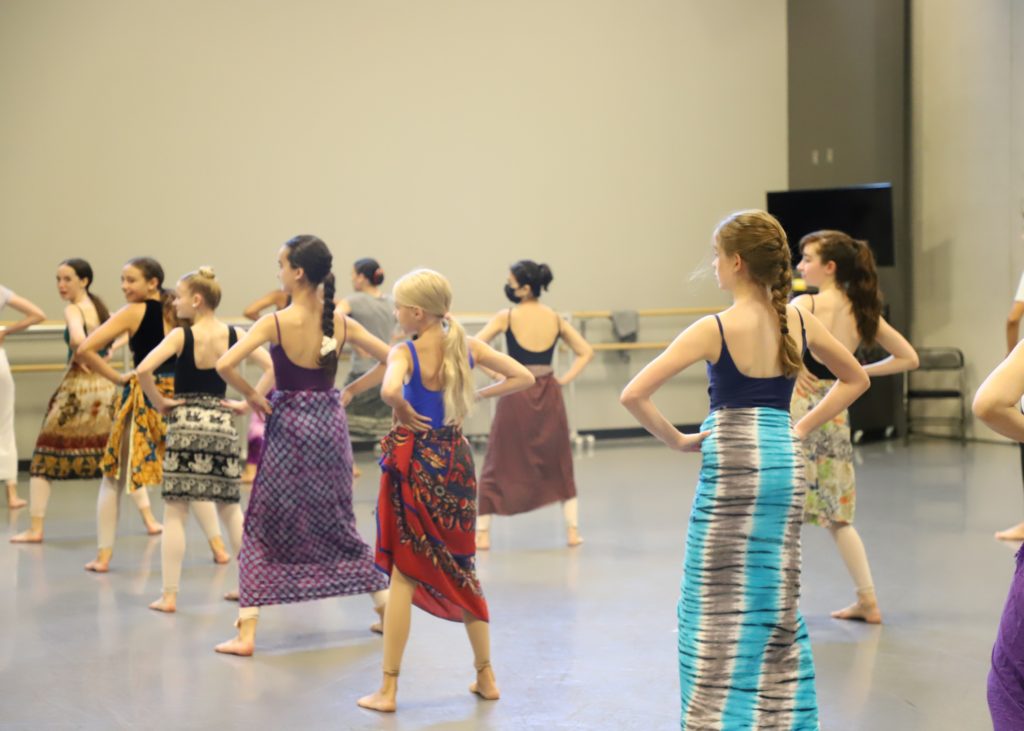
Meeting Each Student Where They Are
The Junior Intensive isn’t the only place where each student’s individual growth is prioritized. “We have faculty who are focused on the development of the intermediate dancers, on the advanced dancer and on the precipice of being a professional dancer,” says Cravotta. This approach was abundantly evident to both Gresham and Roush. “When I got into the company, I was not like, ‘Oh this is different than what I’ve always known’; I can hop into anything new and lunge forward with it,” reflects Gresham.
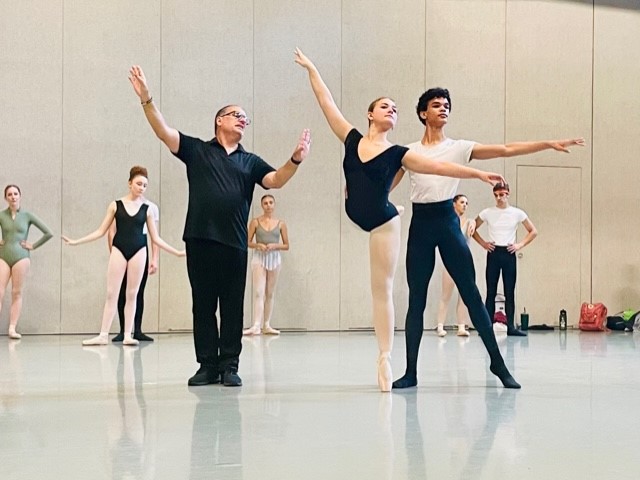
About 50 percent of Charlotte Ballet II dancers are graduates of the company’s Trainee Program, which frequently finds new dancers from the Summer Intensive. Three of the main company’s 19 current artists are graduates of Charlotte Ballet Academy programs. Much of that success rate can be credited to the academy’s holistic culture. “We work to establish communication among our students and our staff and faculty,” says Cravotta. “Students are walking past my office door and the other faculty members’ doors on a daily basis, and we try to make sure that they know we’re here as resources for them.”
